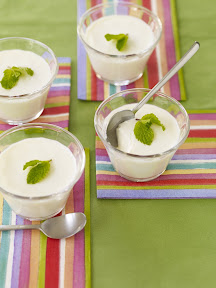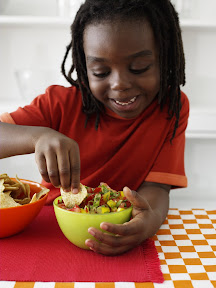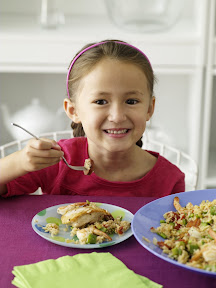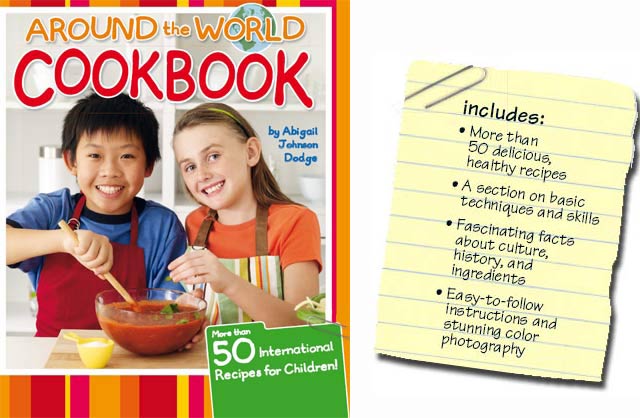Cooking with Kids: The Around the World Cookbook
We have a 6-year old daughter, and she just loves to cook. I am always on the lookout for excellent kids cookbooks - ones that teach, besides having quality recipes. Too often, kids cookbooks contain recipes for food that just isn't healthy - promoting blue frosting, or coloring your macaroni and cheese red. YIKES!
However, I have found a kids cookbook that has now taken pride of place in our home. It is international in scope, teaches of cultures as well as recipes, and has just fantastic recipes that *taste good*!! I was lucky enough to sit down and chat with Abby Dodge, the author of the Around the World Cookbook...Let's see what she has to say!
WE: Where did you get your inspiration to write this book?
AD: My first two kid’s cookbooks focused primarily on recipes that we enjoy here in the States. With Around The World, I’m excited to introduce my young readers and their families to the many wonderful flavors and ingredients that are popular in other countries. Because of the increasingly global environment we live in, I think it’s very important for youngsters to try food from different countries and cultures. More and more, kids are exposed to international foods in everyday life. School curriculum is more global, families and neighborhoods are more diverse, international travel is more popular than ever, and then, of course, there is the Internet, which is definitely making the world a smaller, more accessible place. Learning how to make international favorites at home is a fun and easy way to explore different countries and learn how similar, rather than different, we all are.

WE: How long have you taught or cooked with children?
AD: I've been cooking with children for just about 20 years and I learn from each and every one of them. Their questions are remarkably astute and they are most eager learners. About 15 years ago, I created Cooking in the Classroom, an elementary school program linked to our local school's curriculum that teaches kids how to cook. Highlighting math and science along with cultural information, I designed recipes that were classic, easy-to-make and fun for families to make and eat. And.. in 2000, I published my first kid's cookbook.
WE: Your book looks so fascinating - all the global facts, etc. - was it fun to research this?
AD: With this book, it was important to me that it be more than just a collection of recipes so I included fun facts about the different countries that we “visit” and bits of helpful or interesting information about the specific recipes. Learning a bit about culture, geography, and climate adds to the overall ‘flavor” of the culinary experience. And, YES, it was tons of fun for me to explore all four corners of the globe. The hard part was having to pick and choose which tidbits to use -- I wanted to include them all!
With the special spreads on Pocket Foods, Cheeses, and Flatbreads, it was very rewarding to illustrate how many foods are enjoyed globally, if not by the same name. With the opening chapter spreads, I thought it was important to get a sense of the overall region being covered without overburdening my young readers and adding a few tidbits to the recipe pages added some local flavor while, at the same time, keeping the recipes simple, straightforward and easy to follow. So much more information to share on all of these topics -- perhaps a sequel???

WE: How do you suggest that people teach their kids to cook and eat internationally?
AD: Great question and one that can and should be applied to getting kids of all ages to try any new food regardless of the recipe's origin. Even the pickiest of eaters will enjoy - or at least want to try - foods if they are involved in the cooking process. Pride and sense of accomplishment are excellent motivators! And, as an added bonus, you get a fun helper in the kitchen.
If you have more timid eaters, start with more common recipes like Mashed Potatoes or Vanilla Panna Cotta and then graduate to CousCous or Caprese Salad and more. And don't forget to share the sidebar information about the country or culture -- it's a great way to increase their curiosity. You'll be surprised by how much information even the youngest of cooks will retain.

WE: How did you first become interested in spending time in the kitchen?
AD: I’ve always loved to cook! My very first “cookbook” was a little gem called “Mud Pies and Other Recipes – a cookbook for dolls” by Marjorie Winslow. I bet I was about 5 years old when
I started to “cook” from this book and I spent that summer and many others in my backyard making classics like Pine Needle Upside Down Cake and Instant Mud Custard. Clearly, I was a pastry chef in the making!
As I advanced from doll food to people food, my Mom always encouraged me to try new recipes and frequently tore out recipe pages from the women’s magazines. During those quiet afternoons in the kitchen with my Mom, I developed a deep love of cooking and my Mom subtly instilled in me more than a few life lessons.
WE: Do you have a favorite recipe in Around the World Cookbook?
AD: It’s impossible to pick just one!! I love the Shrimp Pad Thai, the ANZAC cookies are yummy, South African Bobotie makes a terrific dinner and the Mexican Chocolate Pudding is so smooth and creamy!

WE: What is the most unique ingredient you’ve ever used in a recipe?
AD: Every culture has unique and exotic ingredients. Galangal (Asian ginger) comes to mind. It might seem unusual and hard-to-find here in the U.S. but it is an everyday ingredient in Asia. It all depends on where you are and what is new to you.

WE: Thanks so much, Abby! We love our copy of the Around the World Cookbook - it already is well-loved and well-used in our home. We can't decide on our favorites, either!
For more information on the Around the World Cookbook, and to peruse Abby's wonderful site, please see: http://www.abbydodge.com/
-

- Log in to post comments




















